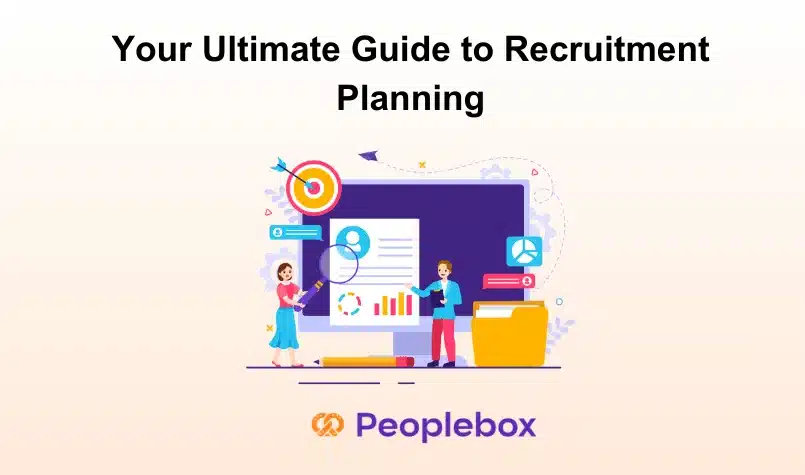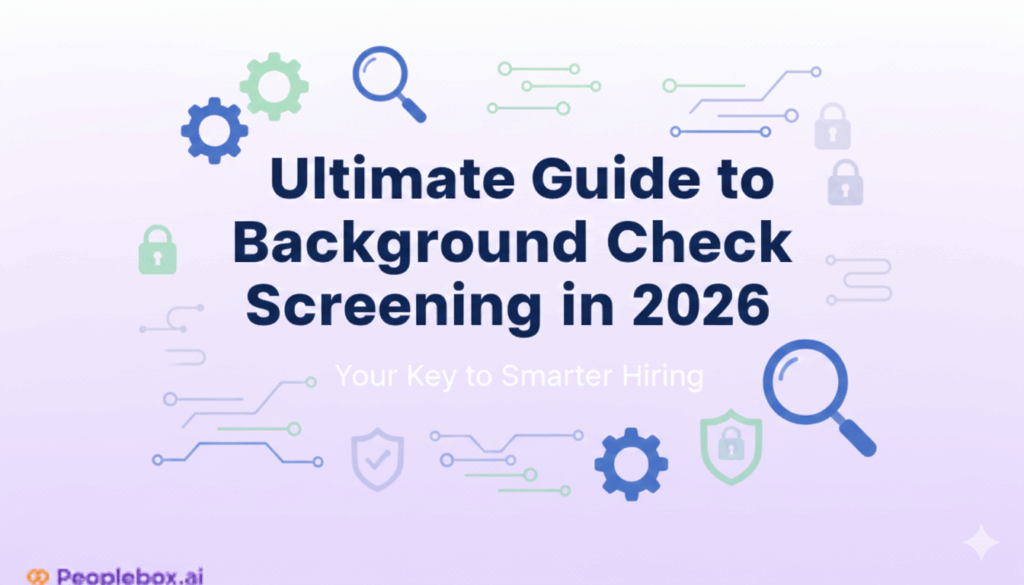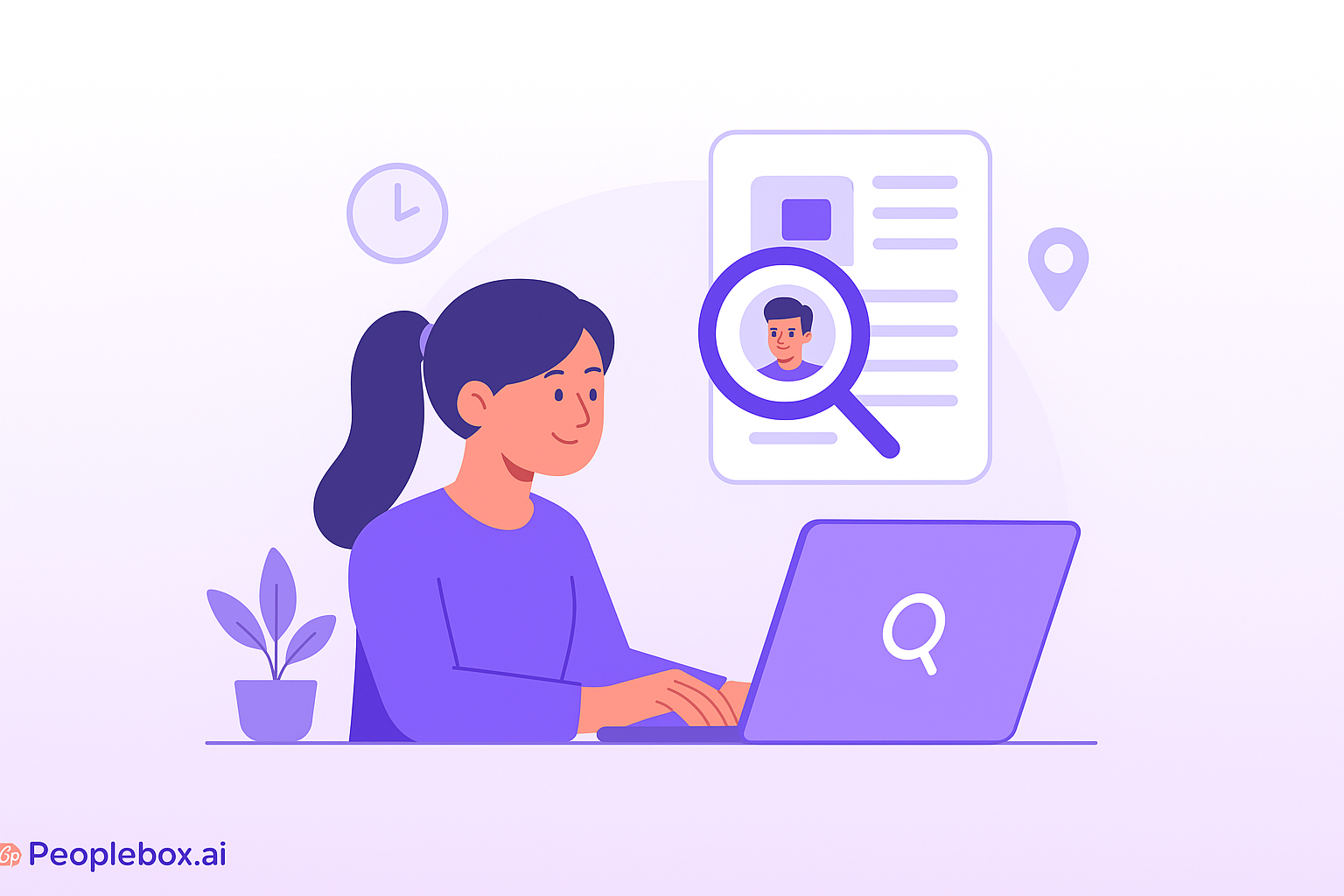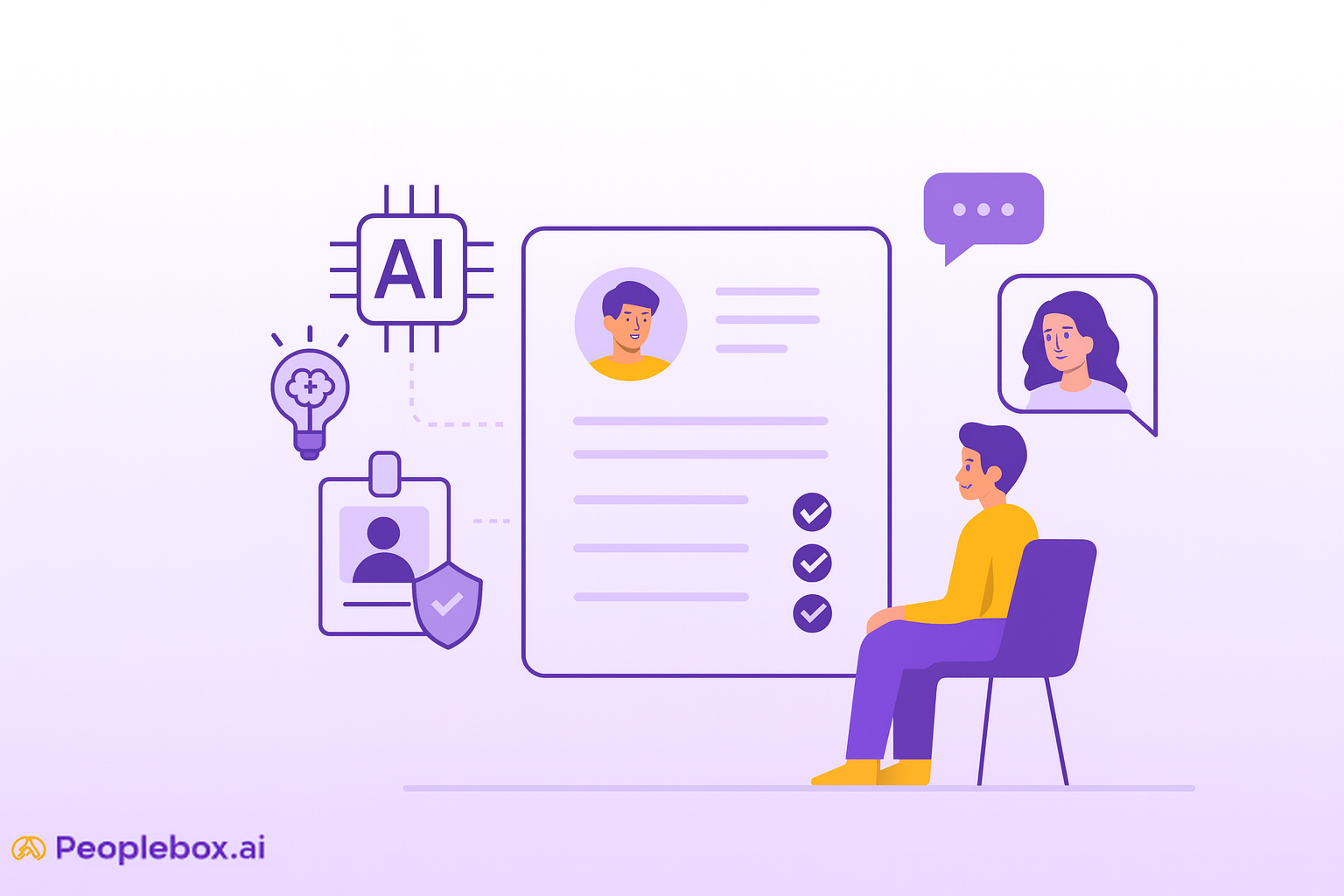Everyone is hiring at the moment and is always on the lookout for talent. Studies say that about 3 in 4 HR professionals say it’s very difficult to find qualified candidates in this talent crisis economy. So if candidates feel your hiring isn’t inclusive, simple, and straightforward, they have tons of other options to choose from.
That’s why having a solid recruitment plan can save you time, standardize hiring, and bring top talent to your company. We’ll show you how you can do that, in this article.
What is a Recruitment Plan?
A recruitment plan is an outline that carves the path for organizations to select and hire the best people. It typically includes defining job roles, identifying necessary skills, outlining sourcing methods, setting a recruitment timeline, and determining recruiting budget and resources. A well-structured hiring plan aligns hiring goals with business objectives, ensuring a consistent, efficient, and fair hiring process that meets organizational needs.
With the influencer economy booming, people are beginning to choose alternate career options and stepping away from full-time work. In this scenario, a solid recruitment plan backed by a hiring strategy is what it takes to make a strong employer brand messaging and stand out as an employer people want to work with, to get to the next level of their career.
Without it, hiring can become cumbersome. Bias creeps in, scores aren’t standardized, there are no protocols in place and it leads to hiring the wrong people for all the wrong reasons. Leaving the wrong people on the job for long has been the root cause of many performance issues and attrition in many companies.
A fair recruitment plan sets protocols in place for all levels of recruitment efforts, so that any HR or hiring managers in the company know exactly what steps to take to screen and hire someone for a role, with no room for favoritism or discrimination.
Step-by-Step Process of Developing a Recruitment Plan
While a strategic recruitment plan may seem like a simple step in defining where and how hiring starts and ends, it runs a lot deeper, starting from what a job entails, how people will be treated, where to look to hire top talent and a lot of other nuances. That’s exactly what we’ll cover in the following steps.

Step 1: Conduct a Job Analysis
This is a crucial step most organizations miss. The main reason they miss is because they don’t want to reinvent the wheel when there are already stock job description templates and document stacks available on the internet.
But here’s the catch. Doing job analysis exclusively for your company is a one-time activity that can bring you returns for a long time, not just for recruitment efforts, but for all other employee lifecycle stages.
The first step is identifying the job position that needs analysis and selecting the right method to collect data, such as interviews, questionnaires, observation, or reviewing existing documents. Engaging employees and supervisors in the process ensures accurate insights into day-to-day tasks and expectations. It’s important to focus on both the tasks performed and the competencies required to succeed in the role.
Once data is collected, it should be carefully analyzed to define core responsibilities, qualifications, and any physical or cognitive requirements. The information is then compiled into a comprehensive job description that can be used for recruitment, training, performance evaluations, and compensation decisions.
Also read: What are the objectives of job analysis?
Step 2: Determine Whether to Hire Internally or Externally
Now that your job descriptions are ready and put into play, the next step to developing the recruitment plan is to decide what your go-to source is when any position opens up. Do you look in first, or look externally first? Studies say only 1 in 4 organizations use talent marketplaces.
The first, best, and most natural course of action is to look for talent in the people you have already hired, and who know your company culture, what you value, how you serve your customers, etc. Regardless of how better skilled your external hire may be, they may not know your business as well as the one who has been with you for a while.
Harvard notes that CEOs brought in from the outside have an 84% greater chance of turnover than insiders in the first 3 years, usually for poor performance.
Unless and until it’s a contingency situation, always prioritize internal job transfer, rotation, or hiring for inside your workforce first. Give them a fair chance. Then look outside. When you do this, you subtly reiterate how much you trust your existing workforce, and they’re more likely to go above and beyond for you.
Determine how to enrich your internal talent marketplace, and after how many screening rounds you’ll choose to hire externally.
Step 3: Align Hiring with Business Objectives
Start by understanding the organization’s short-term and long-term goals. Engage with key stakeholders, such as department heads and executives, to identify critical roles that will support business growth, innovation, or operational efficiency, in the short run and long run. Approach this step with different timelines in mind – how is the market evolving and how will it look in 6 months, 1 year, 2 years, and 5 years?
With GenAI taking over the technology sector, customers are preferring AI-powered tools to automation tools, and the fascination with AI is only set to grow. Is the organization planning to embrace AI, or lead the change by inventing a whole new AI tool? What’s your stand in the landscape?
Talking to leaders, and visionaries in your company, and backing your conversations by talking to line managers and employees will tell you how the company is steered, and how it’s actually moving. Take these short-term and long-term goals of your company into your recruitment efforts, and prioritize individuals with those functional, cross-functional, and behavioral competencies.
It’s not just the positions they will fulfill, but how resilient they are in times of change and how they’re ready to arm themselves against this rapidly changing environment.
Even when companies hire beyond their requirements, the ones who diversify their skills and grow with the company are given a chance and are considered assets. It’ll help you retain current talent and not have to keep searching for candidates for the same position every 3-6 months.
About 70% of HR professionals in an SHRM study said that recruiting candidates with the skills necessary for the present and future was difficult, and they had to hire another set of candidates right after one batch or train the recently hired one to meet new emerging technologies.
Once these objectives are clear, tailor the recruitment plan by prioritizing positions that drive the most value for the organization. Design job descriptions, sourcing strategies, and candidate profiles that reflect the skills and expertise necessary to achieve business goals. This alignment ensures that each hire not only fills an immediate need but also strengthens the company’s overall strategic direction.
Step 4: Develop a Recruitment Budget and Timeline
Take into account the expenses for job advertisements on various platforms, recruitment agencies, fees, background checks, applicant tracking systems, and any travel or relocation costs for potential candidates.
It’s important to assess whether specialized roles require more sourcing investment, such as attending career fairs or using premium recruiting tools. Once these costs are calculated, allocate recruiting budgets that balance effective hiring with financial constraints, ensuring resources are used efficiently.
Take a close look at your talent acquisition tech stack and check if it’s being used to its full potential. If you have multiple tools but your recruitment team is still manually sending calendar invites and following up for hiring manager feedback, it’s time to look for options.
Include the cost of commissioning a new tool in the budget. Similarly, if you’ve been sourcing leadership candidates by yourself, but want to outsource it to an exclusive executive search firm, include the same. That’s why this step follows recruitment strategy alignment with organizational objectives.
For the timeline, outline each step of the talent acquisition process, including job postings, application deadlines, interviews, offer letters, and the onboarding process. Align the timeline with the urgency of the role and the business’s operational needs, ensuring there’s enough time for thorough candidate evaluation while preventing delays.
You can get all these details by conducting a thorough job analysis and a compensation benchmarking exercise, which will show you where the industry is, so you can decide whether to lead, lag, or follow what’s happening in the industry.
Step 5: Defining Hiring Deadlines
One of the biggest challenges recruiters everywhere face is getting hiring manager availability and following up for feedback, to move the candidate to the next stage, before they lose interest in the company and move to a competitor.
That’s why your recruitment plan needs to have stringent deadlines for each recruitment stage for all positions, and also a time-to-fill for every position depending on the eclectic mix of skills required for the position.
First, establish when the position needs to be filled based on business demands or project timelines. From there, work backward to set deadlines for job postings, application closure, interview rounds, and final decision-making. These deadlines ensure that the hiring process remains structured and efficient.
Each step should have a firm deadline, with buffers built in for unforeseen delays or candidate negotiations. Coordinating with hiring managers and stakeholders ensures that their availability aligns with interview schedules and that decision-making time is clearly outlined.
Having specific deadlines creates accountability, helps track progress, and ensures the recruitment process stays on track without losing momentum.
Step 6: Identify and Choose Sourcing Methods
Research where your target candidates are most likely to be found—this may include online job boards, industry-specific platforms, social media, or professional networks like LinkedIn. If you’re hiring for niche roles, consider specialized job boards or attending relevant industry events and career fairs.
Internal sourcing methods, like employee referrals or promotions, should also be explored as a cost-effective and trusted way to fill positions.
Once you have a clear understanding of where potential candidates are, prioritize sourcing methods based on factors like budget, reach, and past success. For example, if previous hires have come through referrals or LinkedIn, these methods should be emphasized.
Combine a mix of active and passive sourcing strategies—such as direct outreach to passive candidates via networking or talent databases—to ensure a diverse and high-quality talent pool.
Countless sources for you to choose from, but only a few that’ll work right for you. About 62% of HR professionals want to recruit from more diverse and underutilized talent pools for two reasons.
You could use internal talent marketplaces to tap into the potential of your own talent, or go for staffing agencies to help you fill the role, or now you have a wide pool of freelance, or independent recruiters who tap into their network and get you high-value candidates at a fraction of the cost.
Three other possible sources could be ex-employees with whom your company is on good terms. When you reach out to them, one of three things will happen. Either they’ll come back, send an awesome referral, or post your job opening on their social saying how much they loved working with you. Either way, win-win.
The next source is interns who worked with you recently or a while ago and whose performance was well-appreciated by their hiring managers. Since they already know how your company works, and are proficient with the business, they could be great additions.
The next source is independent contractors or freelancers who work with you. They may be looking for a full-time job, and since you already have a pre-existing relationship, they’d make a great fit.
Refrain from ruling out any source just because it’s not as conventional or expensive as others. And always, always count on your highly engaged existing employees to send good referrals your way. List down all possible talent sources you have in your organization. Rate them based on their reliability, your experience with them, their credibility, and other factors.
Step 7: Outline the Recruitment Process
SHRM studies say 19% of HR professionals felt their organization’s lengthy or complicated hiring process made it difficult to recruit them. Finding the right balance between testing the candidate thoroughly and testing their patience with multiple pointless rounds of interviews is hard. You can never be 100% sure of a candidate’s prowess, it’s a calculated gamble you take with them, and the more information you have the better.
So, design the recruitment process with that in mind. Some of the aspects you need to pay attention to and leave to chance are:
- Candidate requisition form/workflow to raise recruitment risks
- Compensation requisition and confirmation template (taking into consideration the industry benchmark for the position)
- Creating and updating job descriptions, after job analysis
- The language that goes into the job description (make sure it’s inclusive and in no way discriminatory)
- Frame a candidate engagement sequence of emails and time them right, so you know they keep hearing from you
- Set up all parallel and subsequent approval workflows for the position and job post
- Automate the workflow to first match your job requirement to the internal talent marketplace, to check for potential internal hires
- Implement applicant tracking systems (ATS) and resume screening tools to filter applications based on keywords and qualifications
- Establish standardized criteria, and scoring for reviewing resumes to ensure fairness
- Keep in touch with all candidates, and store all profiles (even clear misfits for the job) so you can use them for another job that comes up
- Use scheduling software to coordinate interview times with candidates and interviewers. This is important, so candidates can take a look at the interviewer calendar and book their own interviews, saving a huge amount of time
- Train your interviewers on the talent acquisition strategy and interview process
- Use assessment tools such as competency-based interviews to evaluate soft skills and problem-solving ability
- Gather input from multiple interviewers using shared digital forms for assessment
- Integrate tools into your ATS that can simultaneously conduct background checks as you proceed with candidates to the later stages of the process
- Design approval workflows for salary and benefits packages that require sign-off from finance and leadership
- Use e-signature tools to streamline the offer acceptance process and track the offer status
- Establish guidelines for salary and benefits negotiations Develop a structured onboarding process, including company orientation, team introductions, and training schedules.
Step 8: Develop an Interview and Assessment Strategy
As discussed in the previous point, the assessment and interview process and recruiting strategy need a lot of forethought to make sure it’s comprehensive and truly beneficial to both the company and candidates. 28% of HR professionals are planning to relax education and degree requirements to focus on skills and choose the most skilled hires. So the assessment criteria need to involve extensive simulation, and skill assessments involving as many real-time use cases as possible.
Using advanced pre-employment tests or assessments to identify qualified candidates is found to be favored by 35% of HR professionals and also time-consuming by others. It’s found to increase the time taken to hire for each position. Here are some fundamentals to help you set up the right interview and assessment strategy as part of your hiring plan.
Get hiring managers to identify the essential skills, experience, and attributes that the ideal candidate should possess. Break these down into key areas of focus for the interview, such as technical skills, problem-solving abilities, communication, and cultural fit, ensuring that all interviewers understand what they should be assessing during the process.
Next, select appropriate interview formats based on the role’s requirements. Consider options like one-on-one interviews, panel interviews, behavioral interviews, or group assessments, and incorporate practical tests or challenges for technical positions. Create standardized interview templates that include core questions aligned with the identified competencies, utilizing behavioral or situational questions to understand how candidates have navigated real-world scenarios.
Additionally, incorporate objective assessments, such as personality tests or skill evaluations, to provide data-driven insights into candidates’ suitability for the role.
Finally, establish clear evaluation criteria and scoring rubrics to ensure a consistent and unbiased assessment process. Train interviewers on best practices, emphasizing the importance of structured interviews and the effective use of evaluation tools. For complex roles, consider implementing multi-stage interviews to allow for thorough assessments. Gather and consolidate feedback from all interviewers in a central system, enabling transparent discussions and facilitating timely decision-making.
Suggested Read: 15+ Types of Recruitment Methods to Hire the Top Talents
Step 9: Collaborate with Stakeholders Throughout the Organization
Incorporate feedback systems across all levels of the recruitment process, so people can inform each other how a particular selection or screening move went, and pave the way for the next course of action.
Everyone gives their people requirements to the recruitment function, but most often end up feeling the team takes a long while to find candidates, when in fact finding and filtering good candidates and following up with hiring managers is such a task. To show what’s going, on and nip any issues in the root, set up review meetings with hiring managers regularly, and ask them what’s working and what’s not. Train interviewers, assessment administrators, managers, and leaders on your hiring plan, steps, what they can expect by when, and the mandatory requirements they need to give for every personnel requirement.
After hiring, solicit feedback on both the recruitment process and the new hire’s performance to identify areas for improvement. Repeat the same feedback collection process 30, 60, and 90 days after hiring.
Step 10: Measure and Optimize Your Recruitment Plan
Once the recruitment plan is put in action, start measuring the following metrics:
- Time to Fill
- Quality of Hire
- Candidate Satisfaction
- Offer Acceptance Rate
- Retention Rate (of new hires who remain with the company after a specified period (e.g., 6 months, 1 year))
- Cost per Hire
- Hiring Manager Satisfaction
Every quarter check in with your recruitment teams, and inform the management and leadership team on the status. Parallelly keep assessing your sourcing methods and ATS performance, so you know your needs are completely met, your budget is utilized right and you provide a series of A-list talent to your business needs without stalling business progress.
Performance Review Platform
Get a glimpse of how Peoplebox make performance reviews painless, actionable and fair
The Ultimate Guide to AI in Recruitment
Streamline Your Recruitment Plan with Peoplebox
A solid strategy not only helps streamline the hiring process but also enhances candidate experience and aligns hiring goals with organizational objectives.
- Automated Candidate Screening: Peoplebox can automate the process of screening and shortlisting resumes of applicants for the required post. It can perform tasks on thousands of applications with accuracy in just a matter of seconds.
- Role Clarity and Competency Mapping: Define and map job roles with required competencies, ensuring alignment with organizational goals.
- ATS and HRIS Integration: More than 50+ HRIS, ATS, and communication platforms are seamlessly integrated with Peoplebox, so you can now deal with the entire recruitment plan.
- Use talent Insights to find the right fit: Leverage existing performance data to find the right fit for your company and culture.
- Scoring Resumes and Shortlisting: The Automatic AI Resume screening automatically scores and shortlists candidates based on the key matching and attributes.
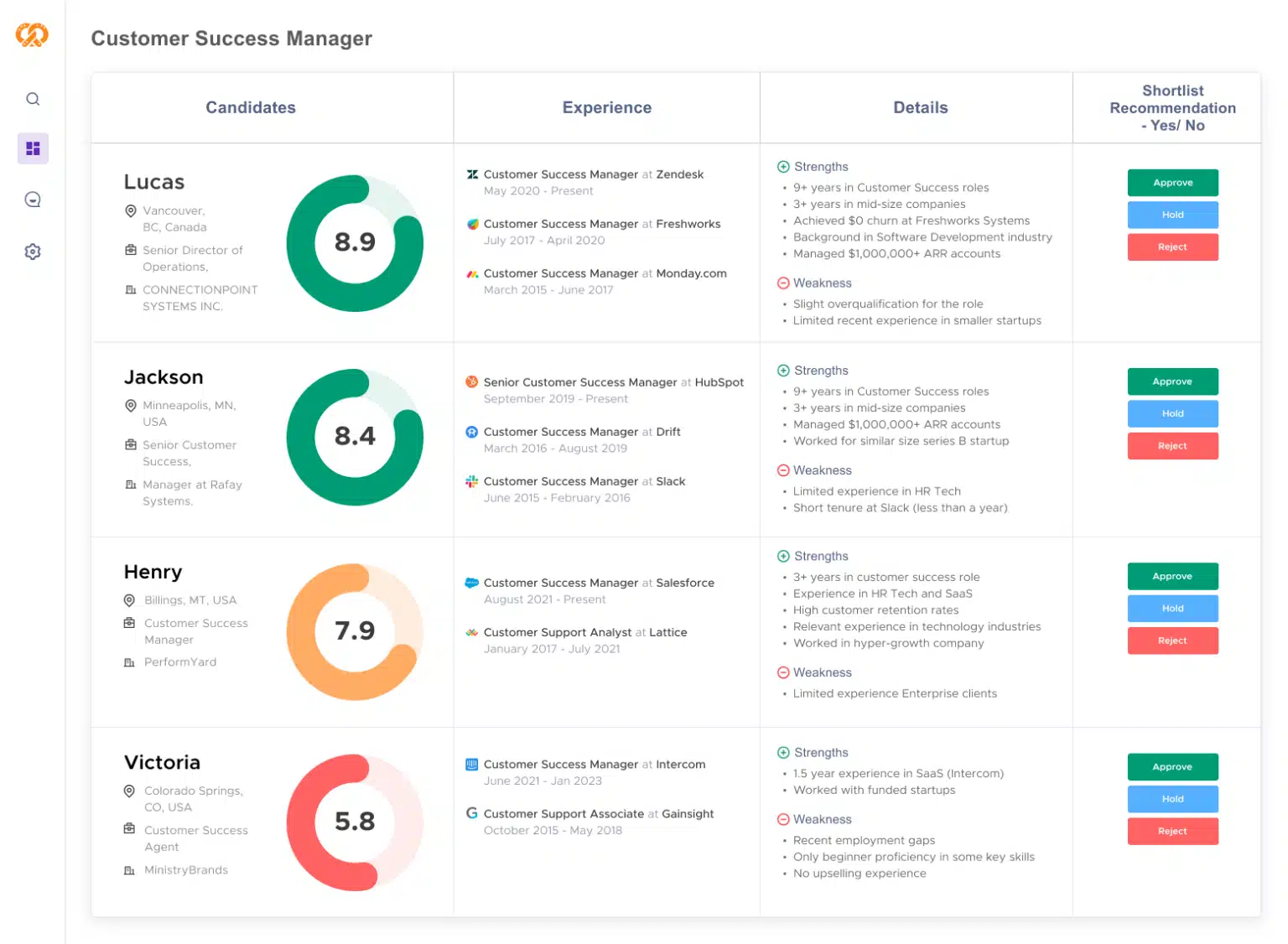
What Makes Peoplebox Different?
- Customizable to Your Needs: Every company’s recruitment plan is different. Peoplebox is highly customizable, allowing you to tailor workflows, candidate assessments, and reporting metrics to fit your unique hiring process.
- Scalable for Growing Teams: Whether you’re a startup with a small HR team or an enterprise scaling fast, Peoplebox grows with your organization, offering flexible features that adapt to your changing recruitment needs.
Incorporating Peoplebox into your recruitment plan means more efficient hiring processes, better collaboration, and data-driven decisions that lead to higher-quality hires. Transform the way you recruit and ensure your company is always staffed with the best talent using Peoplebox.
Performance Review Platform
Get a glimpse of how Peoplebox make performance reviews painless, actionable and fair
The Ultimate Guide to AI in Recruitment
Conclusion
Framing a hiring plan is a fundamental exercise. But to simply hire good people and onboard them before competition poaches them, many organizations skip this step, which later on leads to a lot of miscommunication, plenty of manual tasks, each person setting their own standards, and precious working days missed because of open positions.
Take a proactive approach and build a strong recruitment plan that not only serves your current needs but is robust enough to take on future changes you may make with upcoming hiring needs, without requiring you to start from scratch.

